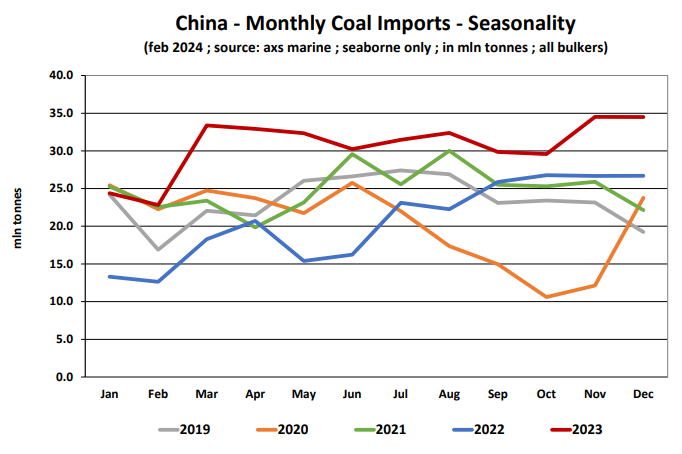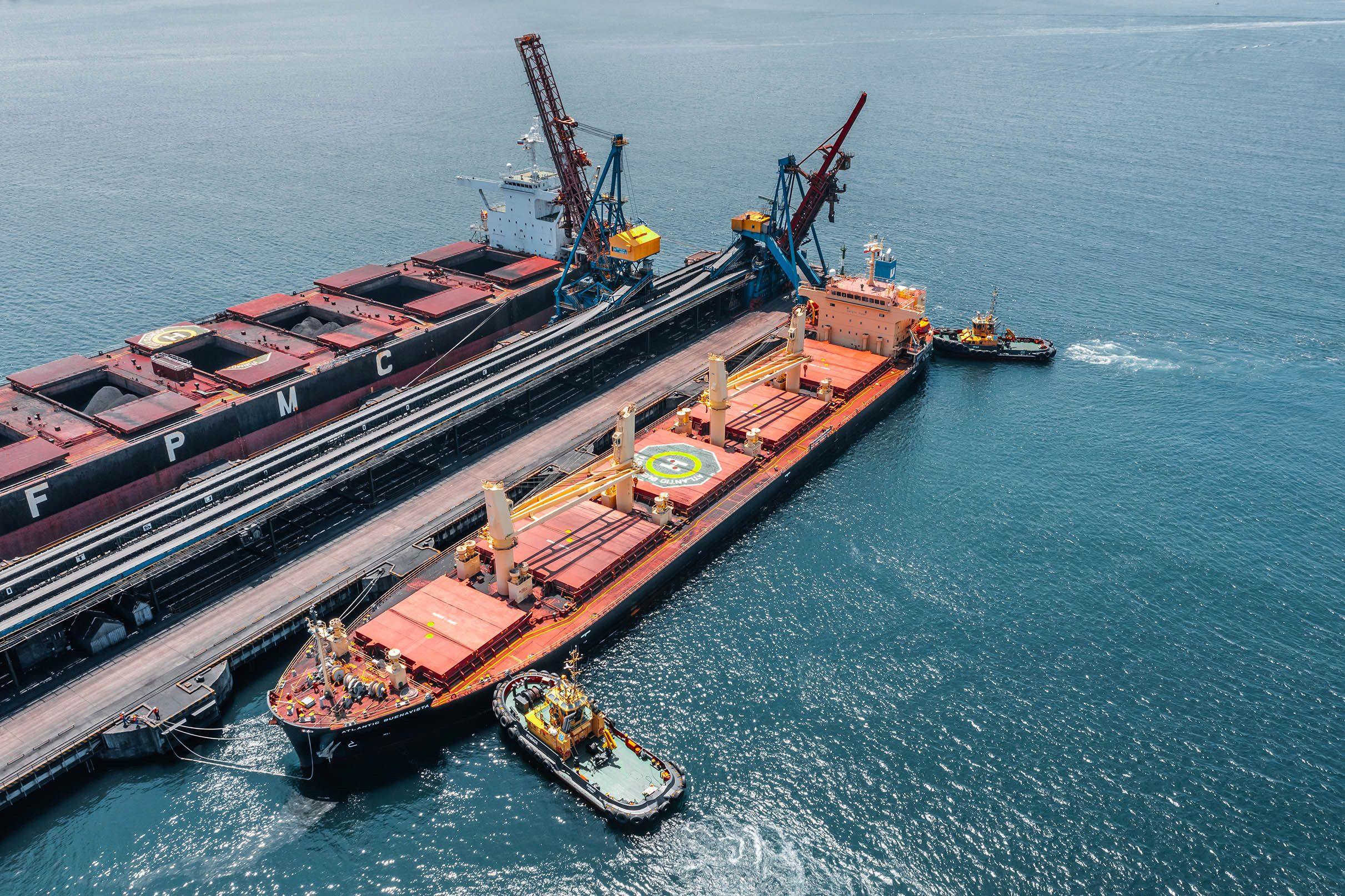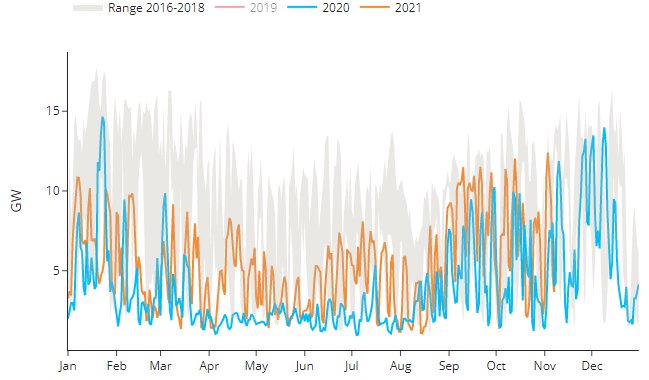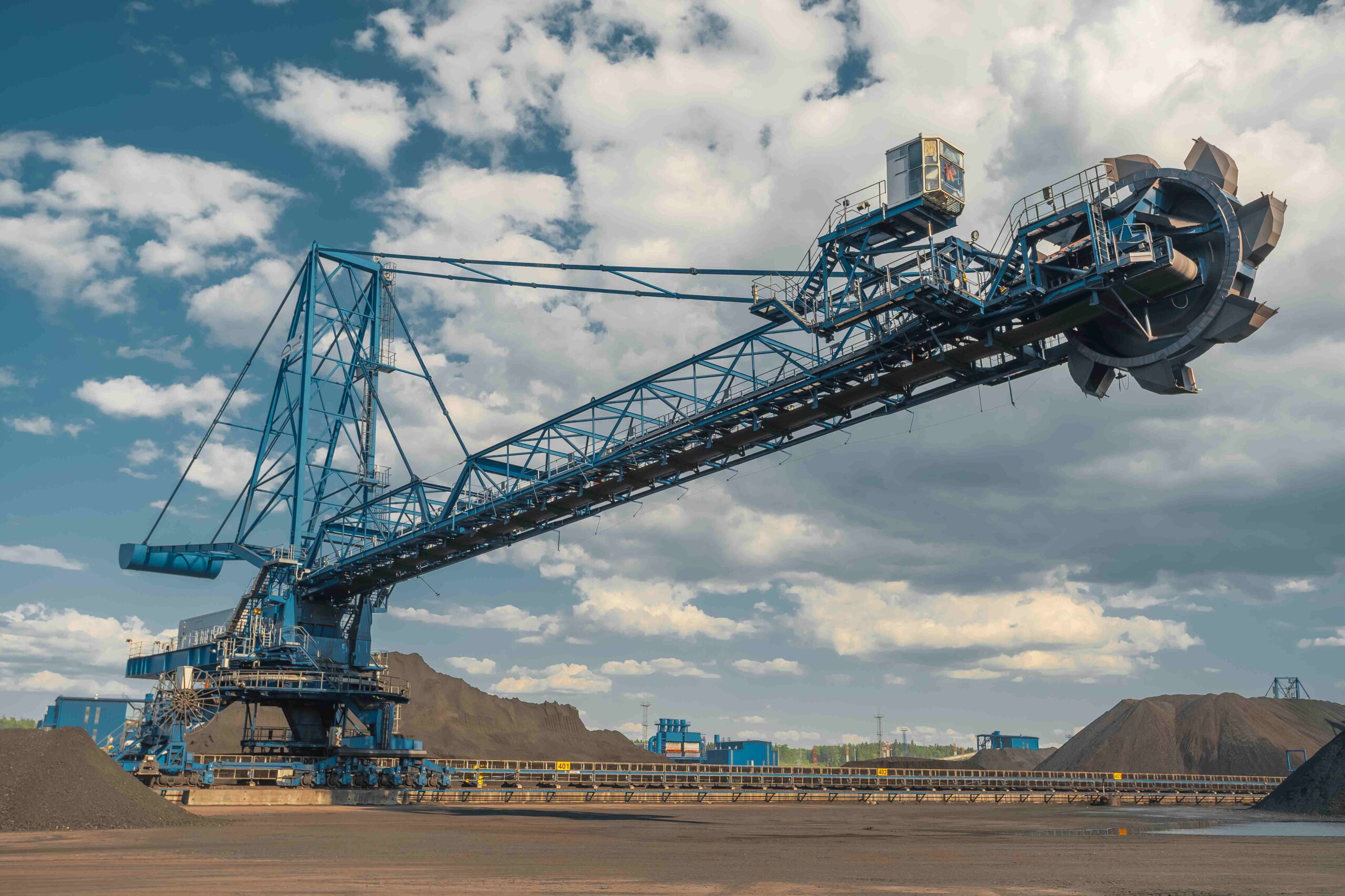

Mainland China is currently the world’s largest seaborne importer of coal (including both thermal and coking), accounting for 27.5% of the global seaborne coal market in 2023.
Global coal trade has really picked up pace in recent months, and is now fully back to pre-Covid levels.
In Jan-Dec 2023, global seaborne coal loadings increased by +5.8% yo-y to 1,339.5 mln t (excluding cabotage), based on vessel tracking data from AXS Marine.

This was well above the 1,265.5 mln t loaded in Jan-Dec 2022, the 1,254.2 mln t in Jan-Dec 2021, and
the 1,196.5 mln t in Jan-Dec 2020. It was also a little above the 1,309.8 mln t loaded in Jan-Dec 2019. In Jan-Dec 2023, exports from Indonesia increased by +10.2% y-o-y to 494.6 mln t, whilst from Australia were up +4.6% y-o-y to 344.1 mln t.
From Russia exports declined by -2.1% y-o-y to 184.6 mln t in 2023, from the USA increased by +16.7% yo-y to 86.6 mln t, from South Africa increased +0.4% y-o-y to 60.8 mln t.
Shipments from Colombia increased by +1.9% y-o-y to 56.4 mln t in JanDec 2023, from Canada by +9.6% yo-y to 49.9 mln t, and from Mozambique surged by +15.1% t-o-y to a record 23.8 mln t.
Seaborne coal imports into Japan declined by -10.3% y-o-y to 160.5 mln t in Jan-Dec 2023, to South Korea by -4.4% y-o-y to 117.4 mln t, to Taiwan -4.3% y-o-y to 58.3 mln t, whilst to India increased by +6.9% yo-y to 240.8 mln t and to Vietnam +54.2% y-o-y to 47.4 mln t.
Mainland China is currently the world’s largest seaborne importer of coal (including both thermal and coking), accounting for 27.5% of the global seaborne coal market in 2023.
It is ahead of India, which accounts for 18.0% of coal trade and Japan with a 12.0% market share. Total seaborne coal imports into China in the 12 months of 2023 reached 368.4 mln tonnes, according to Refinitiv vessel tracking data.
This was up +48.6% y-o-y from the 248.0 mln tonnes of 2022, and +23.5% from the 298.2 mln t in 2021, and also +50.7% above the 244.5 mln tonnes imported in 2020.
Almost half of coal volumes into China (45.0%) are loaded on Panamax vessels, with 29.5% on Supramax and Ultramax vessels, 7.2% on Post-Panamaxes and 14.4% on Capesize tonnage.
Top discharge ports for coal imports into China in Jan-Dec 2023 were Fangcheng (23.9 mln tonnes of coal in Jan-Dec 2023), Machong (20.1 mln t), Caofeidian (17.1 mln t), Qinzhou (15.3 mln t), Meizhou (15.2 mln t), Shanghai (12.8 mln t), Gaolan (11.2 mln t), Taicang (10.6 mln t), Haimen (10.2 mln t), Yuhuan (10.0 mln t), Nanjing (9.8 mln t), Ningbo (9.3 mln t), Rizhao (9.3 mln t).
Indonesia is still by far the top supplier of coal to China accounting for 55.8% of China’s imports in the full 12 months of 2023.
Arrivals from Indonesia increased by +24.7% y-o-y to 205.7 mln tonnes in the full 12 months of 2023 compared to 164.9 mln t 2022. Volumes exceeded the record 193.0 mln tonnes in 2021.
The second largest supplier of coal to China is Russia, accounting for a 20.6% share of Chinese imports. Coal shipments from Russia to China increased by +31.8% y-o-y to 75.8 mln tonnes in Jan-Dec 2023, from 57.5 mln tonnes in 2022 and 49.6 mln tonnes in 2021.
Most Russian shipments are sourced from the Far East region of the country, with 17.6 mln tonnes imported from the port of Vanino, 12.0 mln t from Shakhtersk, 10.3 mln t from Nakhodka, 8.8 mln t from Vostochny.
Imports to China from Russia have surged over the last two years as Europe suspended purchasing from the country as a consequence of the war in Ukraine.
Australia is now back and the third largest supplier of coal into China with a share of 14.2%.
In 2023, China imported 52.3 mln tonnes of coal from Australia, up from 0.2 mln tonnes in 2022 when the boycott against Australian coal was still being enforced.

This was however still below the 70.6 mln tonnes imported from Australia in 2020.
Source: Bancosta












